Instruction
Are you a candidate for a driving iron?
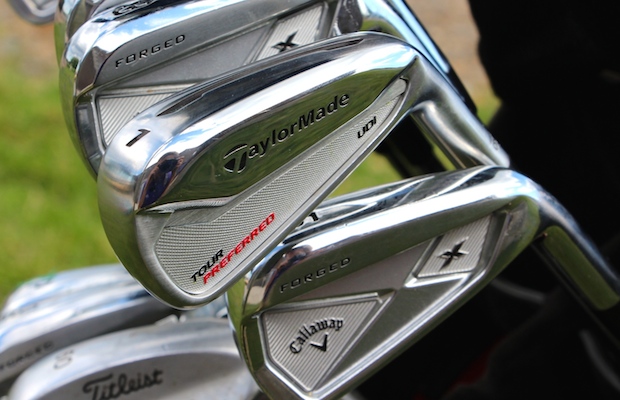
A few weeks ago I wrote an article comparing the performance of my 5 wood, hybrid and 3 iron on Trackman to better understand the pros and cons of each club.
It wasn’t that hard to guess that the 5 wood flew higher, carried farther and landed softer than the rest. What was very eye-opening to me was the lack of height my 3 iron produced. It flew much lower than the PGA Tour Average, and its lower flight is the sole reason why I no longer carry a 3 iron. It comes out too flat and runs when it hits the ground, and that’s not a good trajectory for hitting shots into a green. That’s also why my hybrid has been so valuable to me. Like my 5 wood, it flies higher and lands softer.
While I know that hitting long irons into the greens is not optimal, what about using one primarily off the tee? Also, what about golfers who play in windy conditions? Are they better off with a long iron?
Since this is British Open week, I thought it would be a good idea to examine these questions for my readers on GolfWRX.
The wind is known to be a factor in the UK and many other places like Texas and Oklahoma, so the high-flying shots I hit with a hybrid and 5 wood are probably not the best option if you play golf in those conditions. So if you cannot use your fairway woods and hybrids into the wind with success, what should you do?
The answer is to employ a “driving iron,” a club that is nothing new to most golfers. Their updated designs, however, have made these clubs super easy to hit unlike the driving irons of the past. If you keep up with new golf equipment releases like most GolfWRXers do, you’ll notice that several companies have released new driving irons and I think they can make a big difference in certain goflers’ games.
First, a little background. Driving irons are bulked-up players irons that are designed to hit the ball higher and farther than standard 1, 2 or 3 irons. Their trajectory will be lower than most similarly lofted fairway woods and hybrids, however, their lower launch angles and landing angles lead to a huge amount of roll. That’s perfect for windy conditions and fast, firm fairways.
The latest driving iron to be released is TaylorMade’s new UDI, which stands for “Ultimate Driving Iron,” and the company was kind enough to send me a 1 iron and 2 iron ahead of time so I could test them on Trackman and explain why a driving iron may or may not be a good fit for your game.
See what GolfWRX Members are saying about TaylorMade’s UDI in our Official Testing Thread.
For this test, I will be using a UDI 1 iron that measures 16 degrees as well as a UDI 2 iron that measures 18 degrees. Both clubs are built to standard length (39.75 inches in the 1 iron, 39.25 inches in the 2 iron) and have Oban’s Kiyoshi Purple 100-gram hybrid shaft in stiff (04) flex.
The first 10 shots with each club were hit off a tee. I hit the next 10 shots with each club off the ground hitting “stingers,” low-trajectory shots that simulate the shots many pros will be hitting off the tee when necessary this week.
An important note: The roll data in the Trackman screenshots below is calculated using the average amount of roll on PGA Tour fairways that Trackman has gathered since 2003.
Here’s what the data says.
UDI 2 iron hit from a small tee
- The clubhead speeds were between 93.7 mph and 95.1 mph giving me carry distances that ranged from 225.4 to 239.9 yards.
- The average height was 87 feet in the air with an average spin rate of 5151 rpm.
- As you can see, the landing angles are still flat enough for some run out even at this height. The average 35.2-degree landing angle created an average roll of 22.8 yards.
- What is nice to see is that the height is up, the spin is manageable and yet the landing angles are still pretty flat. That means we are not losing any distance when the ball is teed up
UDI 2 iron “stinger” from the ground
- The club head speed for the two different shots (full swing from a tee and stinger from the ground) is basically the same. I averaged 1.3 mph more club head speed hitting “stingers,” so that gave me a touch more ball speed on shots I hit solid.
- The spin rate dropped from 5151 rpm to 4990 rpm on these stinger shots off the ground, which gave me a feeling of more compression (or a lower spin loft) due to the decreased dynamic loft.
- The average dynamic loft for the “normal” shot was 16.7 degrees while the stinger was 12.1 degrees.
- These balls almost carried the same distance, but when you chart the landing angle you can see that the stinger landed at 29.7 degrees. That’s 5.5 degrees less than shots of the tee, which gave me more roll.
- If we take out shot No. 6, which was a mis-hit that spun too much, the average total distance increased to 257.8 yards. That shows that lower, more driving shots hit with less spin will tend to chase forward more with these clubs than stock shots.
UDI 1 iron hit from a small tee
- The club head speed went up with the 1 iron due to its 0.5-inch length, but not by much. I averaged 96.5 mph compared to 94.5 mph and 95.8 mph with the 2 iron.
- The spin rate dropped slightly to 4467 rpm with the 1 iron, but the height went up slightly to 90 feet.
- The carry ranged from 228.4 yards to 253.5 yards. As you can see, there were a few “jumpers” that carried 250 yards, but that isn’t much farther than the 241-yard average.
- The landing angles are once again around 35 degrees, which gives us a nice amount of roll out even with the higher trajectory.
- As the swing speed increases and loft lowers, you will tend to see some added side-to-side dispersion. What’s nice is that none of these shots are off the planet. That’s a testament to the forgiveness built into these clubs.
- In regard to the carry distances being a touch volatile at 25.1 yards, I did hit one funky shot at 228.4 yards. Taking that one out would give us a carry dispersion of only 18 yards. That’s not bad with a 1 iron.
- As we lower dynamic loft, the height of the shot will decrease. That requires a higher ball speed in order to carry the ball as far. The average dynamic loft on the stock 1-iron shot was 15.9 degrees, while the average dynamic loft of the 1 iron stinger was only 10.1 degrees with a relatively minor ball speed increase of 2.3 mph. That’s why the ball did not carry as far with the 1 iron stinger shot as it did with the stock shot.
- When you drop the spin and lower the dynamic loft, you will tend to lose height (90 feet with the stock 1 iron shot, 55 feet with the 1 iron stinger), but you can make up for this in roll if the conditions are right through the lower landing angle. In this case, the 1 iron stinger’s average landing angle was 26.4 degrees, about 9-degrees lower than the stock 1 iron shot.
- The roll out for the stock 1 iron shot was 24.3 yards, but the stinger gave me 36 yards of roll. So if you’re trying to avoid the wind and use firm fairways to chase the ball forward you have your club (a UDI 1 iron) and your shot type (a stinger).
- I did hit one stinger that was a rocket. It carried 245.7 and gave me a total distance of 275.7, which says if you can catch these irons just right they will really, really GO!
Let’s summarize
- You will see very little clubhead speed differences between the two clubs because they are not that much different in length.
- The technology built into the driving irons of today — a little more offset, “Speed Pockets,” thin faces and low center of gravities, etc. — are a must to make these clubs much easier to hit than you’d think they would be. This is the reason that today’s driving irons are a great choice for the better player who plays in conditions that warrant such a club.
- The UDI 2 iron was a comfortable 230 carry for me at altitude while the UDI 1 iron gave me 240 yards of carry. As you look into your own game, you must figure out where this club fits into your set. Sometimes a club that carries 230 yards and rolls to 250 yards is the ticket, while other times a club that carries 240 yards and rolls to 260 yards is better. Monitor your gaps to choose the right club.
- I did hit a few shots with the UDI out of the rough, but if you don’t have at least an average lie you will see flatter than normal trajectories from these driving irons.
- When hit from a “jumper” lie, these clubs are like magic. They go high and far with the feeling of more control just like an iron.
- You must practice hitting the stinger shot with these clubs. If you do not have the ability to decrease your dynamic loft and hit a low runner, you are missing a key shot that these irons can add to your game.
Finally, and maybe most importantly for the readers looking to buy a driving iron, don’t let your ego become a part of your loft decision. Some golfers will get better numbers with a UDI 3 iron (20 degrees) than they will a UDI 1 iron or 2 iron and that’s great. Buy the club that will help your game the most, not what will look the coolest in your bag.
See what GolfWRX Members are saying about TaylorMade’s UDI in our Official Testing Thread.
- LIKE260
- LEGIT42
- WOW32
- LOL18
- IDHT22
- FLOP18
- OB15
- SHANK23
Instruction
Clement: Stop ripping off your swing with this drill!

Not the dreaded headcover under the armpit drill! As if your body is defective and can’t function by itself! Have you seen how incredible the human machine is with all the incredible feats of agility all kinds of athletes are accomplishing? You think your body is so defective (the good Lord is laughing his head off at you) that it needs a headcover tucked under the armpit so you can swing like T-Rex?
- LIKE0
- LEGIT0
- WOW1
- LOL0
- IDHT0
- FLOP0
- OB0
- SHANK2
Instruction
How a towel can fix your golf swing
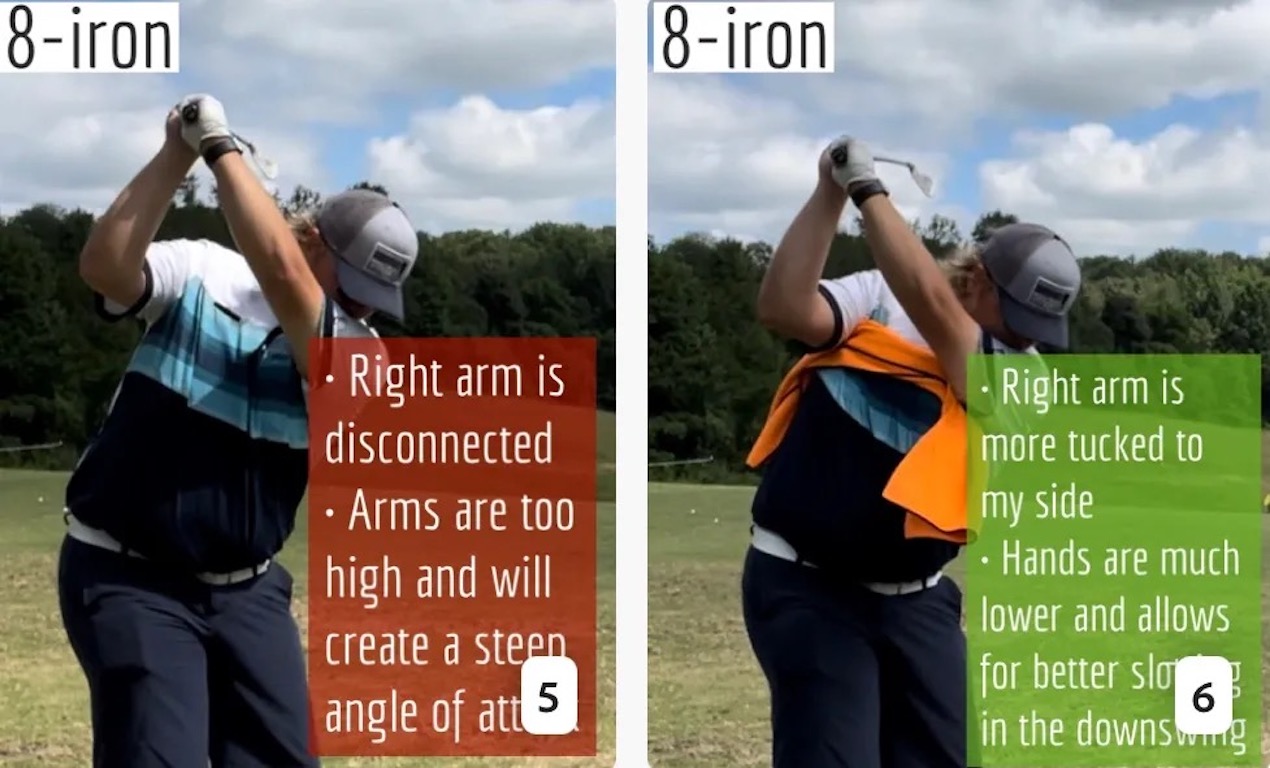
This is a classic drill that has been used for decades. However, the world of marketed training aids has grown so much during that time that this simple practice has been virtually forgotten. Because why teach people how to play golf using everyday items when you can create and sell a product that reinforces the same thing? Nevertheless, I am here to give you helpful advice without running to the nearest Edwin Watts or adding something to your Amazon cart.
For the “scoring clubs,” having a solid connection between the arms and body during the swing, especially through impact, is paramount to creating long-lasting consistency. And keeping that connection throughout the swing helps rotate the shoulders more to generate more power to help you hit it farther. So, how does this drill work, and what will your game benefit from it? Well, let’s get into it.
Setup
You can use this for basic chip shots up to complete swings. I use this with every club in my bag, up to a 9 or 8-iron. It’s natural to create incrementally more separation between the arms and body as you progress up the set. So doing this with a high iron or a wood is not recommended.
While you set up to hit a ball, simply tuck the towel underneath both armpits. The length of the towel will determine how tight it will be across your chest but don’t make it so loose that it gets in the way of your vision. After both sides are tucked, make some focused swings, keeping both arms firmly connected to the body during the backswing and follow through. (Note: It’s normal to lose connection on your lead arm during your finishing pose.) When you’re ready, put a ball in the way of those swings and get to work.
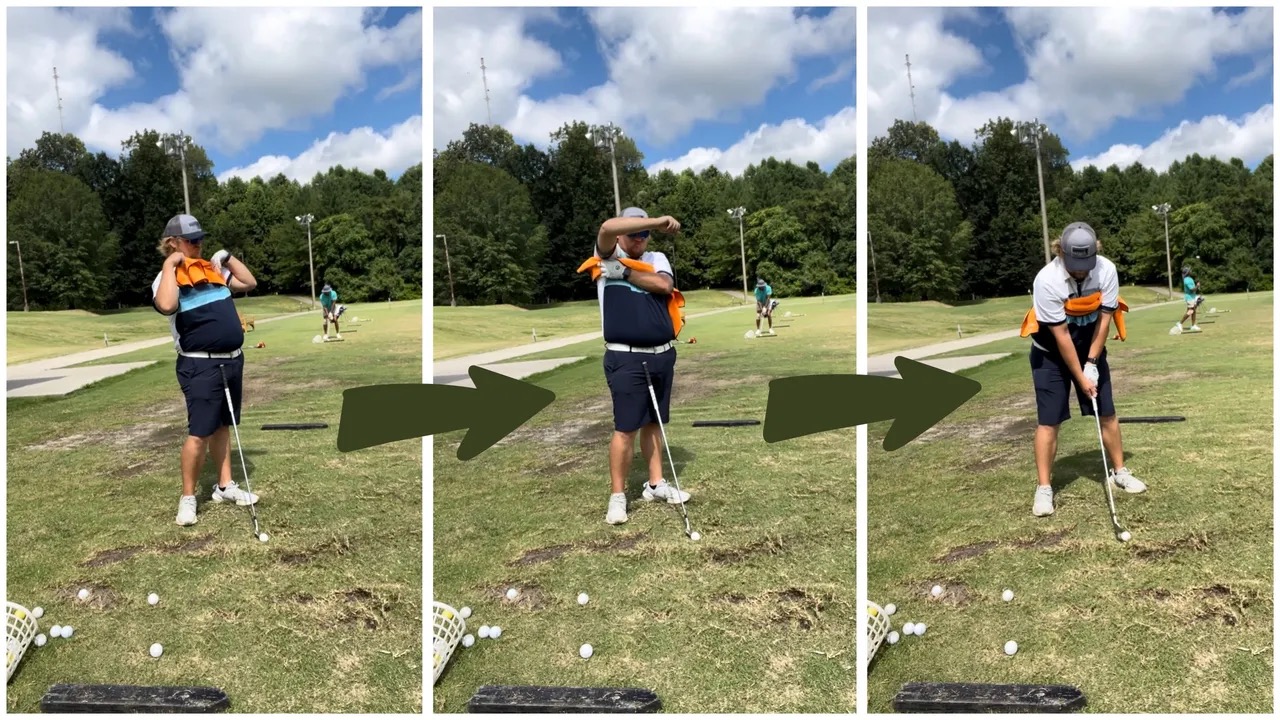
Get a Better Shoulder Turn
Many of us struggle to have proper shoulder rotation in our golf swing, especially during long layoffs. Making a swing that is all arms and no shoulders is a surefire way to have less control with wedges and less distance with full swings. Notice how I can get in a similar-looking position in both 60° wedge photos. However, one is weak and uncontrollable, while the other is strong and connected. One allows me to use my larger muscles to create my swing, and one doesn’t. The follow-through is another critical point where having a good connection, as well as solid shoulder rotation, is a must. This drill is great for those who tend to have a “chicken wing” form in their lead arm, which happens when it becomes separated from the body through impact.
In full swings, getting your shoulders to rotate in your golf swing is a great way to reinforce proper weight distribution. If your swing is all arms, it’s much harder to get your weight to naturally shift to the inside part of your trail foot in the backswing. Sure, you could make the mistake of “sliding” to get weight on your back foot, but that doesn’t fix the issue. You must turn into your trial leg to generate power. Additionally, look at the difference in separation between my hands and my head in the 8-iron examples. The green picture has more separation and has my hands lower. This will help me lessen my angle of attack and make it easier to hit the inside part of the golf ball, rather than the over-the-top move that the other picture produces.
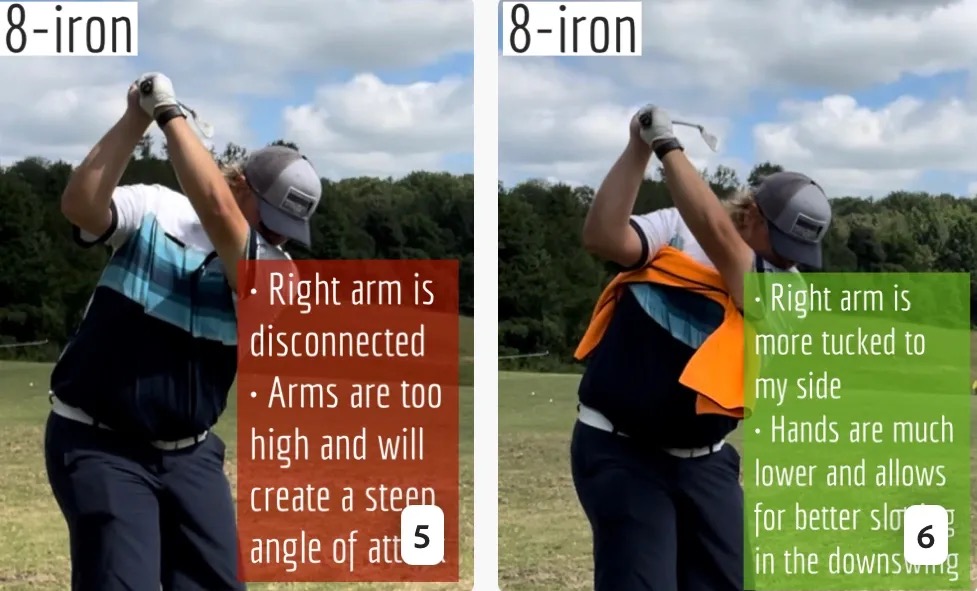
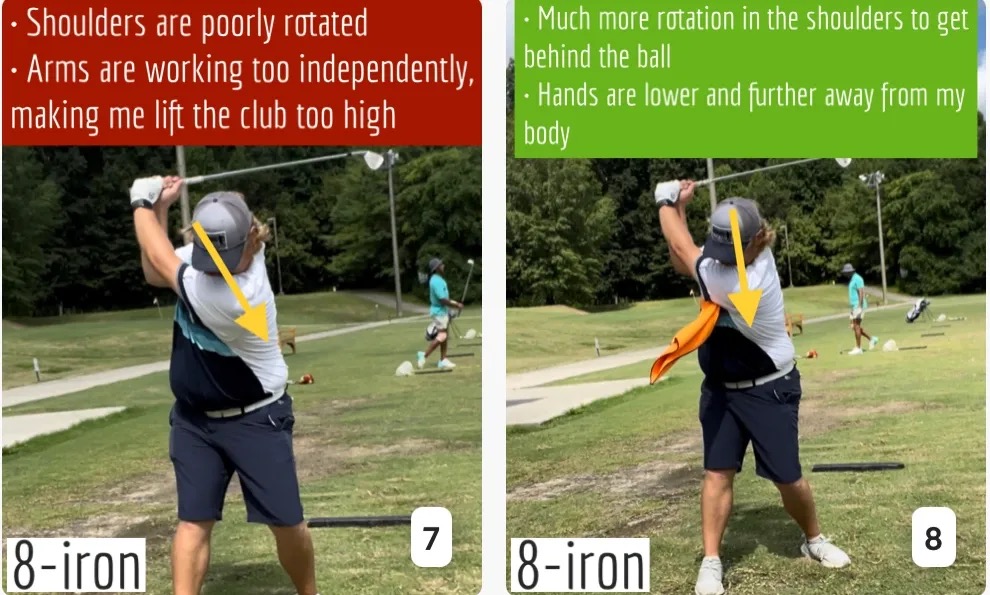
Stay Better Connected in the Backswing
When you don’t keep everything in your upper body working as one, getting to a good spot at the top of your swing is very hard to do. It would take impeccable timing along with great hand-eye coordination to hit quality shots with any sort of regularity if the arms are working separately from the body.
Notice in the red pictures of both my 60-degree wedge and 8-iron how high my hands are and the fact you can clearly see my shoulder through the gap in my arms. That has happened because the right arm, just above my elbow, has become totally disconnected from my body. That separation causes me to lift my hands as well as lose some of the extension in my left arm. This has been corrected in the green pictures by using this drill to reinforce that connection. It will also make you focus on keeping the lead arm close to your body as well. Because the moment either one loses that relationship, the towel falls.
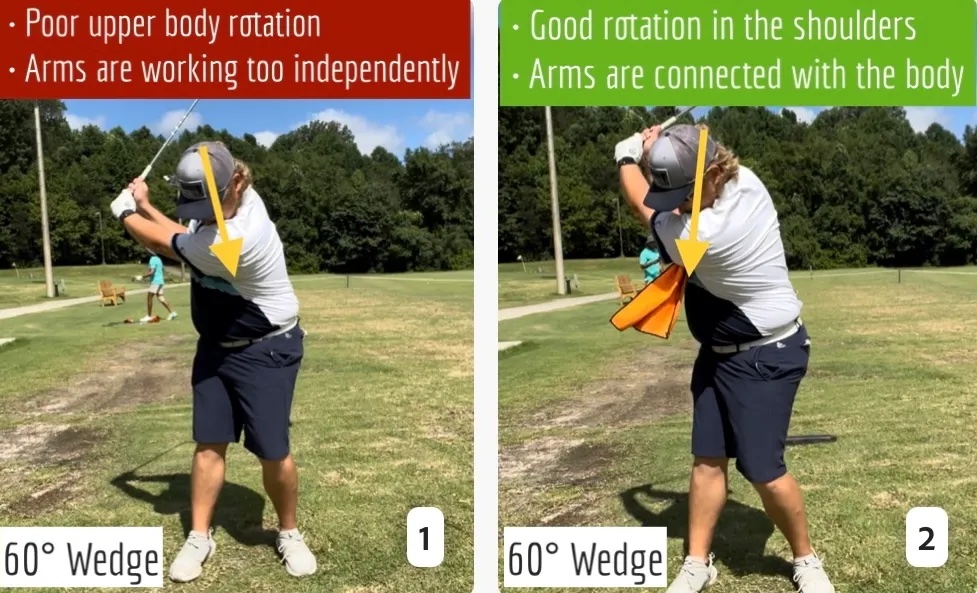
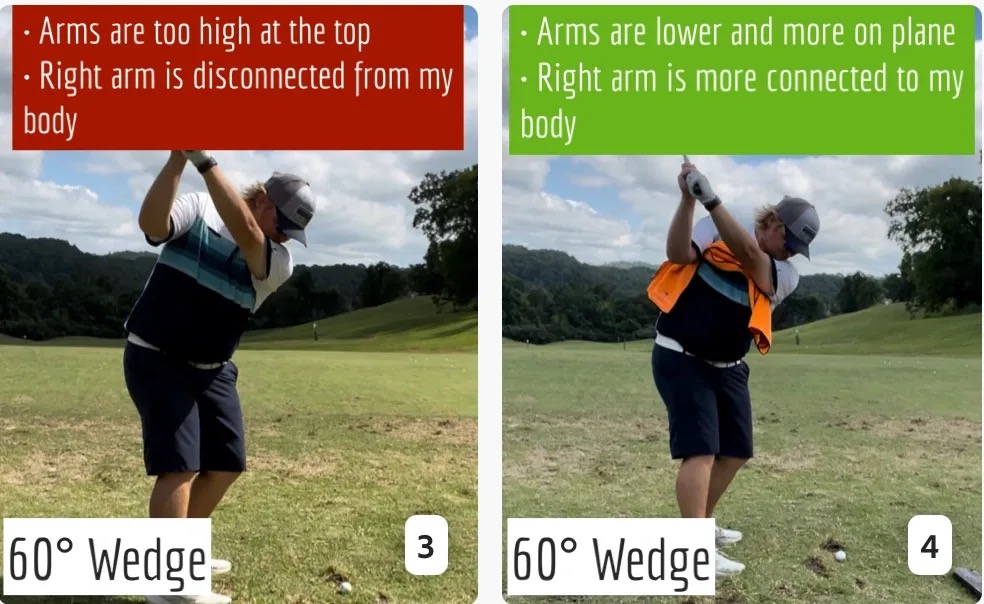
Conclusion
I have been diligent this year in finding a few drills that target some of the issues that plague my golf game; either by simply forgetting fundamental things or by coming to terms with the faults that have bitten me my whole career. I have found that having a few drills to fall back on to reinforce certain feelings helps me find my game a little easier, and the “towel drill” is most definitely one of them.
- LIKE11
- LEGIT1
- WOW2
- LOL0
- IDHT0
- FLOP2
- OB0
- SHANK8
Instruction
Clement: Why your practice swing never sucks
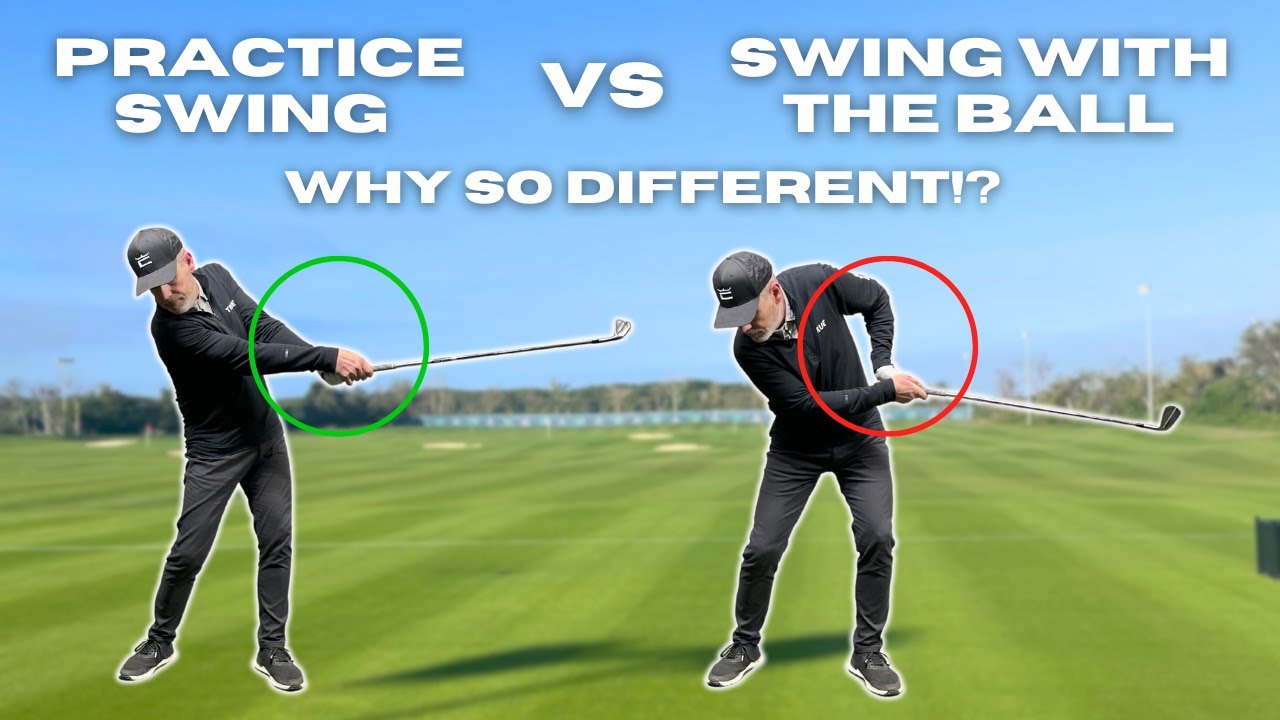
You hear that one all the time; I wish I could put my practice swing on the ball! We explain the huge importance of what to focus on to allow the ball to be perfectly in the way of your practice swing. Enjoy!
- LIKE0
- LEGIT0
- WOW0
- LOL0
- IDHT0
- FLOP0
- OB0
- SHANK2
-

 19th Hole3 weeks ago
19th Hole3 weeks agoTour pro calls Anthony Kim a ‘f*****g idiot’ following Instagram comeback post
-

 19th Hole3 weeks ago
19th Hole3 weeks agoThis Rory McIlroy post-round ‘The Match’ moment is going viral…but all is likely not what it seems
-

 Whats in the Bag3 weeks ago
Whats in the Bag3 weeks agoAnthony Kim WITB 2024 (February)
-
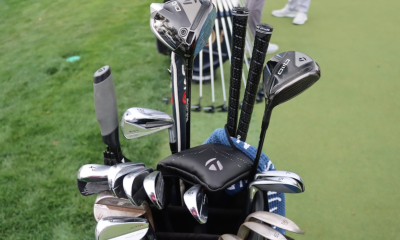
 Whats in the Bag2 weeks ago
Whats in the Bag2 weeks agoScottie Scheffler WITB 2024 (March)
-

 19th Hole3 weeks ago
19th Hole3 weeks agoAnthony Kim’s speculated LIV Golf sign-on fee may surprise you
-
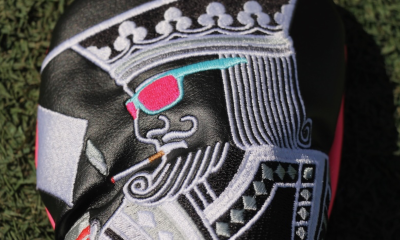
 Tour Photo Galleries2 weeks ago
Tour Photo Galleries2 weeks agoPhotos from the 2024 Arnold Palmer Invitational
-
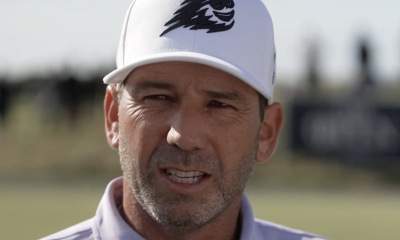
 19th Hole2 weeks ago
19th Hole2 weeks agoThe total sum that Sergio Garcia needs to pay in fines if he wants to return to DP World Tour revealed
-

 19th Hole2 weeks ago
19th Hole2 weeks agoJoaquin Niemann names 3 PGA Tour events he’d love to play each year ‘in a perfect world’

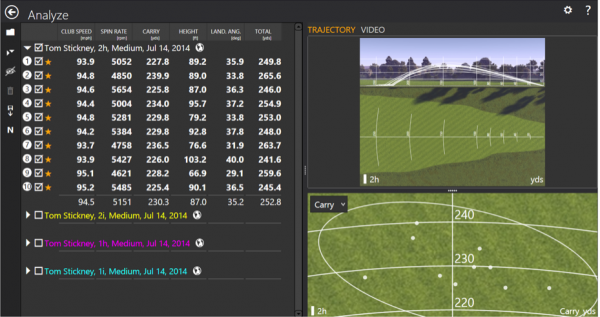
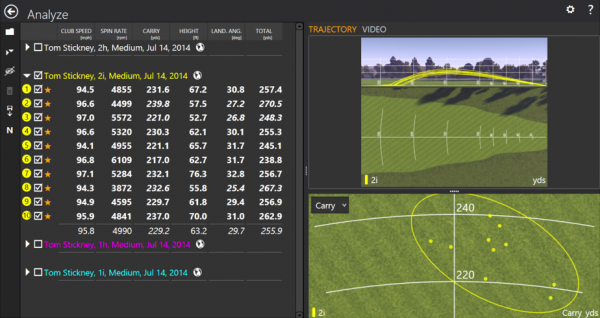
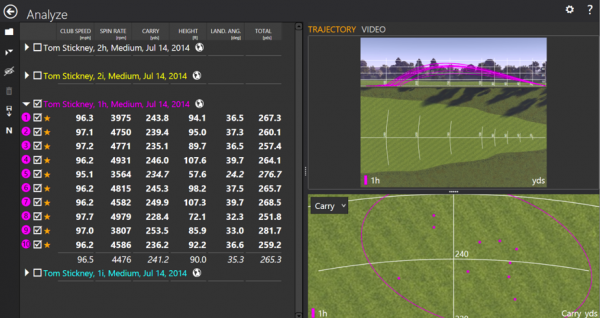
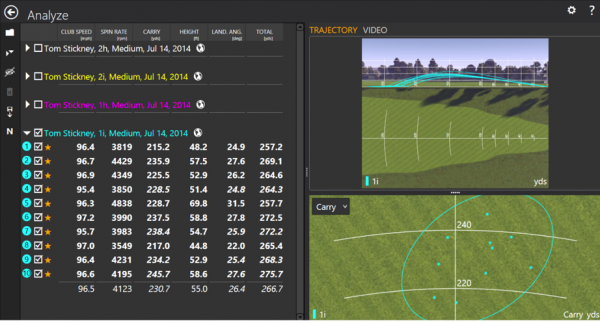
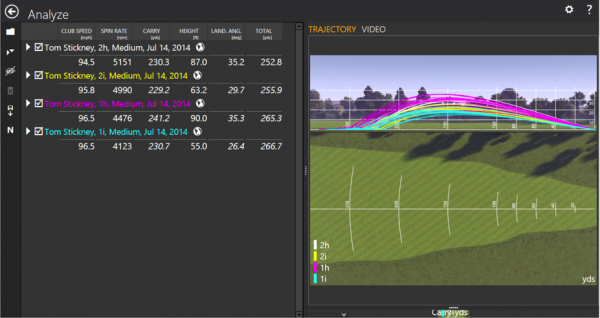








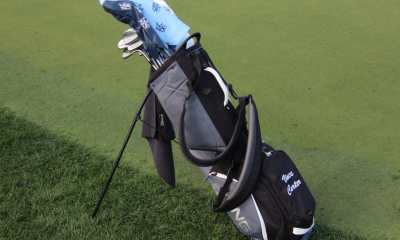

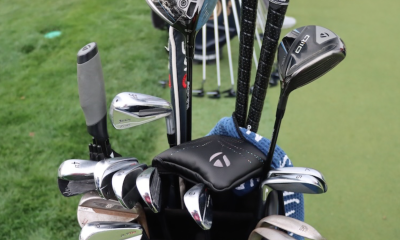

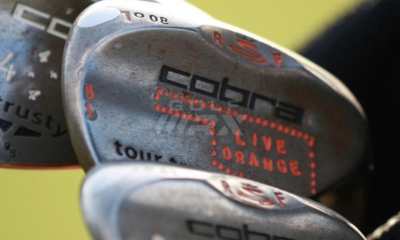

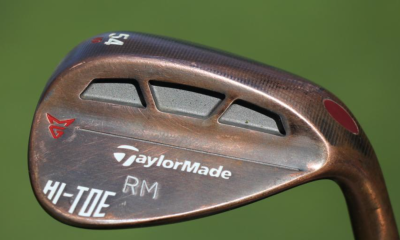

Pingback: What Is A Driving Iron In Golf - Golf Devotee
Pingback: Best Driving Irons In 2020 (Updated Buyers Guide)
Pingback: Top 10 Best Golf Driving Irons Reviews in 2021
Lowell
Jul 27, 2016 at 1:19 pm
To me it all depends on how you attack the ball. Hybrids and long irons still require a bit of downward contact which will be different from say your 3 wood or 5 wood. I loved my udi 2 and 3 but realized that my 3 iron was just as good as the 3 udi and my Sldr hybrid allowed for me to lift up or down if needed which I often do depending on the length of the course I am playing. Now I rotate between carrying a hybrid at all to carrying an extra wedge. The udi driving irons are real easy to hit and with the lower center of gravity have an easier time getting the ball up higher. Just like anything else, it’s the individual players taste and I highly recommend testing out the driving irons or go to the bst and probably can grab one in the !70 dollar range. If you love hitting the longer irons of your bag then the driving irons are your preferred clubs. If you don’t carry more than a 5 iron. I suggest possibly trying a hybrid which offers a thicker sole or ultimately grabbing a 7 and 5 wood instead.
Kieran O'Leary
Jul 22, 2014 at 7:19 am
A review versus a standard 2-iron would also be appreciated. I see McIlroy went with the prototype Nike driving iron, where Tiger stayed with his VRS 2-iron. It’d be interesting to see the distance/flight differences. I currently have an MP63 3-iron as well as a 3-iron bent to 18 degrees a half inch longer than my other 3. Never liked the look of the new Mizuno driving irons though, but would still like to see what, if anything i’m missing out on… And would i be better off investigating getting a proper one
Bill
Jul 21, 2014 at 6:01 pm
Always had trouble hitting hybrids, more so off the tee than the turf. Snap hooks and a ballooning ballflight. Went on a recommendation and purchased the Mizuno MP-H4 3 iron with a DG X100 soft stepped shaft. It is easily the my best performing club in the bag, and my favorite club in the bag. Most par 5s are reachable in two and with the confidence of hitting an iron rather than 3 wood. For anyone looking for a (mostly) forgiving driving iron option, give the MP-H4 a try. Very versatile club, and workable whether off the tee or off the turf.
tom stickney
Jul 21, 2014 at 11:22 pm
They are indeed a great choice…
Tom
Jul 21, 2014 at 11:38 am
There are already a lot of driving irons on the market so if you want one you do not necessarily have to get TM’s new one. I had a Cleveland LDI 15 degree in my bag for the longest time to replace my 3 wood because not only could I hit it lower than the wood, I could also hit it higher if I wanted and I could control it much better. There are also many other driving irons by all the other manufactures.
tom stickney
Jul 21, 2014 at 11:22 pm
There are many others as stated early in the article; however, if you have not tried the new batch you might be missing the boat on mishits
Matt
Jul 20, 2014 at 2:12 am
Not sure if I love “jumpers” off the face. Nothing a good player hates more than inconsistent distance control with a club meant to find fairways and/or lay up short of hazards.
Catching a 275yd jumper is no good when you need 265 to stay short of a 270-275 yard hazard is no good.
tom stickney
Jul 21, 2014 at 11:21 pm
Agree, but for most this is never an issue…the udi didn’t jump too much in my opinion
Rich
Jul 19, 2014 at 7:18 pm
Nice article Tom, but again, someone calling it the British Open. People need to get this right. It’s The Open. Where have you ever see it written or called the British Open? It is the oldest major in golf and people can’t even get the name right. Sorry but c’mon.
Tom Stickney
Jul 20, 2014 at 12:50 am
Just semantics my man….
Rich
Jul 20, 2014 at 4:00 am
Really? So close enough is good enough. Typical.
Jeff
Feb 7, 2015 at 8:33 pm
wow Rich , good job sweating the small stuff in life.. Hope you got tissues close by..
Ken
Jul 17, 2014 at 12:49 pm
I hit my driver 290 and my 5 iron 200 but can’t hit my hybrid. Zzzzzzzzzzzzzzz
Really? Hitting tour distances with everything else just fine though. Well done.
Wake me up when reality hits in!!
tom stickney
Jul 17, 2014 at 5:21 pm
Ken…not quite following your post, sir.
Micah
Jul 20, 2014 at 1:38 pm
I think he was trying to reply to:
Adam B.
July 15, 2014 at 9:29 pm
Gryphon14
Jul 16, 2014 at 12:46 pm
Thanks for the article, Tom. Time and manufacturer-permitting, it would be great to see test data and thoughts around the entire range of driving irons on the market. It’s certainly an area of the Equipment Universe that sees less coverage.
Tom Stickney
Jul 16, 2014 at 2:07 pm
Couldn’t agree more. Thx.
Jake
Jul 16, 2014 at 11:04 am
Just received this from TM support: “The 2 and 1 UDI are going to be 18 and 16 degree lofts. They are going to have a higher trajectory than the Rocketbladez Tour irons. The UDI will be a longer 2 iron than the Rocketbladez Tour. It is built with driver DNA.
Tom Stickney
Jul 16, 2014 at 11:57 am
It’s a solid club for sure.
Mike J
Jul 16, 2014 at 9:57 am
Great review. How would you compare the UDI to older, but still similar driving irons like the Airmuscle? I am currently gaming the 2+3 airmuscles, but do have some trouble hitting them consistently off the turf. I use them almost solely from the tee as I currently don’t play a driver due to bad inconsistency.
Tom Stickney
Jul 16, 2014 at 11:58 am
Thx! I have not tested other driving irons as of yet but hope to do so at some point.
evan
Jul 16, 2014 at 12:51 am
I love these inflated distances as if they are real world data. Was this at the Grand Canyon?
Tom Stickney
Jul 16, 2014 at 12:57 am
NOT inflated at all sir. Please remember that I’m at 7500 feet here in park city not at sea level.
Charles
Jul 17, 2014 at 2:36 pm
Last year I played at Los Cerros Golf Club in Quito, Ecuador 9350 ft. Almost impossible to breath but very rewarding on driving the ball. More than 300 yds!!! At sea level I struggle to reach 250. I was imagining Jamie Sadlowski playing there.
Adam B.
Jul 15, 2014 at 9:29 pm
Tom,
I having trouble figuring out where I would put one of these in my bag. My distances are as follows:
Driver: 290
3 wood (15)- 250
Hybrid (20)- 230
4 Iron- 212
5 Iron- 200
I struggle to hit my hybrid so I would like to add a driving iron. Do you have a recommendation as to what I could take out and what loft?
tom stickney
Jul 16, 2014 at 12:40 am
You might want to try the 18 degree udi 2 iron…you’d have a gap between your 4 and your 2 and you’d have to work around it…experiment
Adam B.
Jul 16, 2014 at 1:08 am
Would you take out the hybrid or 3 wood? I feel like I would hit the UDI 2 iron just as far as my 3 wood. Wouldn’t it be better to go with the UDI 1 and just take out my 3 wood?
CodenameDuchess
Jul 17, 2014 at 2:57 pm
You said you struggled with the hybrid why would you remove your 3 wood? You need to find a club that flies 230ish so you can kick the troubling hybrid out of the bag.
Check out the MP-H4 long irons. They make a 2 & 3 that are basically driving irons. Ping, Titleist & Callaway all make driving irons too. Find the one that you hit 225-230 and you’re gold.
Pingback: Are you a candidate for a driving iron? | Spacetimeandi.com
Jsjones
Jul 15, 2014 at 6:58 pm
I find it difficult to use any hybrid for some reason. My ball striking isn’t bad with any other club except the hybrid. I tend to love these low lofted 3 irons as I carry a Speedblade as my DI now, with a flighted PX shaft. Do you think shaft selection (graphite vs steel) plays a role in this?
Tom Stickney
Jul 15, 2014 at 7:08 pm
Could be. Not sure without seeing your motion. If suggest a fitting to be sure.
Gryphon14
Jul 16, 2014 at 12:44 pm
I have similar challenges. The current range of hybrids such as the RBZ Stage 2 Tour and similar items from the large manufacturers look like pseudo-woods. I’ve never had good luck with fairway metals, be they from Adams or Exotics. The hybrids aren’t helpful to me either and I think it’s largely about the “optics”. Something you may explore (if only because I found it helpful), is returning to more of a “true” hybrid. From a purely optics perspective, something like the Adams DHY Proto strike me as less bulky and more in keeping with the notion of a what a hybrid should be: something between an iron and a fairway metal. In contrast, most of what passes for a hybrid now appears to lean heavily toward actually being a fairway metal, albeit somewhat more compact, and has less resemblance to an iron with each passing product release.
Dave
Jul 15, 2014 at 5:40 pm
Just this morning I took a Callaway FT 2 iron to test it against my Callaway X-Hot pro 2 hybrid. Also as expected the 2 hybrid went higher, farther, and stopped faster than the 2 iron. I am apparently not a candidate for a driving iron.
Tom Stickney
Jul 15, 2014 at 6:23 pm
Testing is always a good idea before you play.
MHendon
Jul 15, 2014 at 5:26 pm
So Tom I’m looking at these and thinking they’re probably great of the Tee or a nice flat perfect lie in the fairway, but much like a regular long Iron not so good from the ruff or a sever down hill or side hill lie. Am I right, because I find it hard to believe anything can really out perform my Adams Idea pro A12 20 degree and Adams Idea pro Black 22 degree from less than perfect lies?
Tom Stickney
Jul 15, 2014 at 6:24 pm
They are better off the tee/fairway giving you more control over your trajectory but most people are better off with hybrids if they don’t play in super windy conditions.